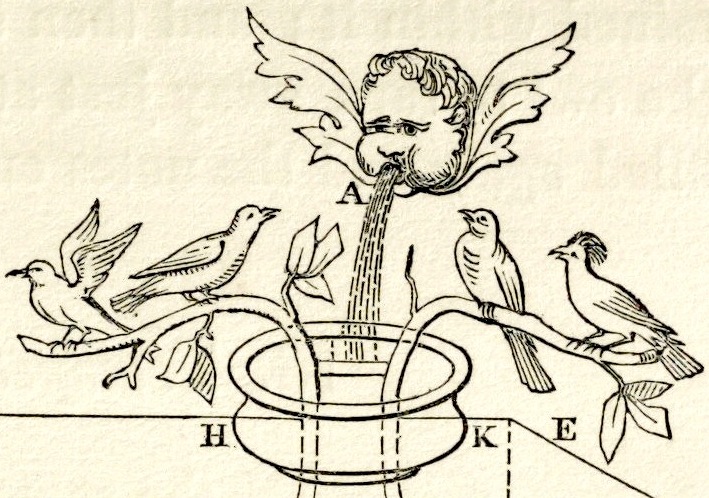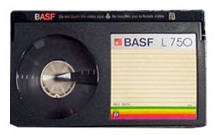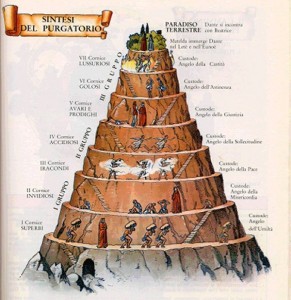
Detail from an illustration in an 1851 English edition of Hero’s Pneumatica.
- The forecast is calling for more rain this weekend. Why not stay in and curl up with a cup of organic fair-trade tea and a nice, laminated U.S. Geological Survey topographical map? Tom Vanderbilt does it from time to time: “For the past number of years, I have been collecting the U.S.G.S.’s maps, treating them as eminently affordable pieces of American art. A favorite is the 1977 map of Eureka, Calif., which contrasts, in stunning dualism, the rugged bathymetry of the Pacific Ocean against the rolling hills of Humboldt County’s redwood forests … On some gray afternoons, sequestered in my Brooklyn apartment, I will pull out, say, a map of Arches National Park, spread it over my kitchen table and trace imaginary pathways across airbrushed depictions of reddish sandstone with my finger … The beauty intrinsic to these maps is the byproduct of an entirely different mode of production, the last gasp of an antiquated way of representing the world.”
- While we’re on government-generated weekend-reading material: if you’re feeling morbid, you could try, instead, the Occupational Safety and Health Administration’s catalog of the ways people have died on the job. Something about its bland, administrative style makes it a chillingly effective memento mori: “Worker was crushed when tractor he was driving, pulling a bin dumper full of pomegranates, fell onto its side. Worker was possibly trying to make a U-turn while going too fast … Worker was engulfed after standing on a pile of beans at a bean plant … Worker was crushed by a rack of baked goods … Worker was eating lunch and swallowed a bee … ”
- Well before the likes of Alan Turing, the notion of artificial intelligence came alive in automata, i.e., self-moving machines. The first robots were, in a sense, waterworks. Jessica Riskin writes:“Many involved elaborate networks of siphons that activated various actions as the water passed through them, especially figures of birds drinking, fluttering, and chirping … Waterworks, including but not limited to ones using siphons, were probably the most important category of automata in antiquity and the middle ages. Flowing water conveyed motion to a figure or set of figures by means of levers or pulleys or tripping mechanisms of various sorts. A late twelfth-century example by an Arabic automaton-maker named Al-Jazari is a peacock fountain for handwashing, in which flowing water triggers little figures to offer the washer first a dish of perfumed soap powder, then a hand towel.”
- Claudia Rankine remembers facing young adulthood with Adrienne Rich as a lodestar: “As a nineteen-year-old, I read in Rich and Baldwin a twinned dissatisfaction with systems invested in a single, dominant, oppressive narrative. My initial understanding of feminism and racism came from these two writers in the same weeks and months … By my late twenties, in the early nineteen-nineties, I was in graduate school at Columbia University and came across Rich’s recently published An Atlas of the Difficult World. I approached the volume thinking I knew what it would hold, but found myself transported by Rich’s profound exploration of ethical loneliness. Rich called forward voices created in a precarious world. And though the term ‘ethical loneliness’ would come to me years later, from the work of the critic Jill Stauffer, I understood Rich to be drawing into her stanzas the voices of those who have been, in the words of Stauffer, ‘abandoned by humanity compounded by the experience of not being heard.’”
- It’s one thing to translate a dead author, who can no longer quibble with your decisions—but a living author is another matter entirely. “The few living authors I’ve translated,” Lydia Davis says in a new interview with Liesl Schillinger, “tend to be very modest and self-effacing, like Snijders and Blanchot, so they’ll say, Whatever you think is best, this is really your work, that sort of thing. I have had friends who have had very different experiences with authors, who say, No, that’s not it at all, and virtually force them to write in a way that they’re not happy writing. I’ve had times when I wished an author were still alive, especially in the case of Michel Leiris, so I could ask, What exactly did you mean? Actually, Leiris sent me a couple of postcards that I framed. His handwriting is great, black spidery old man’s handwriting. As I remember, he said something like, I’m here to help in any way I can. I don’t think I took advantage of his offer, which is something I really regret, now.”

 Best IPL deal: Save $80 on Braun IPL Silk·Expert
Best IPL deal: Save $80 on Braun IPL Silk·Expert  Eugenides on Moshfegh by Jeffrey Eugenides
Eugenides on Moshfegh by Jeffrey Eugenides  Animal Farm Timeline by John Reed
Animal Farm Timeline by John Reed  The best budget
The best budget  Astronomers saw one galaxy impale another. The damage was an eye
Astronomers saw one galaxy impale another. The damage was an eye 







